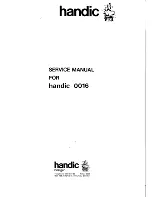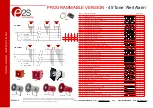
114 |
Appendices |
V90S User Manual
AIS transceivers
AIS transceivers are used by Vessel Traffic Systems to monitor and
control the transmissions of AIS transceivers.
Aids to Navigation (AtoN) transceivers
AtoN transceivers are mounted on buoys or other hazards to
shipping in order to transmit details of their location to the
surrounding vessels.
The V90S VHF radio includes an AIS receiver-only function.
AIS Static and dynamic information
Defined transmit rates for Class A vessels shown below are provided
for reference purposes only. The frequency of messages received
vary due to a number of factors including but not limited to such
factors as antenna height, gain and signal interference.
Static information is either broadcast every 6 minutes, when data
has been amended, or upon request.
Dynamic information is broadcast depending on speed and course
alteration based on the following tables:
Ship’s dynamic conditions
Normal reporting interval
At anchor or moored
3 Minutes
0-14 knots
10 Seconds
0-14 knots and changing course
3 1/3 Seconds
14-23 knots
6 Seconds
14-23 knots and changing course
2 Seconds
Ship faster than 23 knots
2 Seconds
Ship faster than 23 knots and changing course
2 Seconds
Platform’s condition
Normal reporting interval
Class B Shipborne mobile equipment not moving faster than 2 Knots
3 Minutes
Class B Shipbome mobile equipment moving 2-14 Knots
30 Seconds
Class B Shipbome mobile equipment moving 14-23 Knots
15 Seconds
Class B Shipbome mobile equipment moving faster than 23 Knots
5 Seconds
Search and Rescue aircraft (airborne mobile equipment)
10 Seconds
Aids to Navigation
3 Minutes
AIS transceiver
10 Seconds
Source of information for above table 1-1, 1-2: (ITU recommendations
technical document: ITU-R M.1371-1)
















































